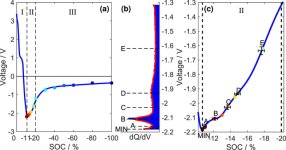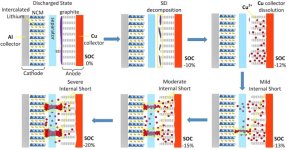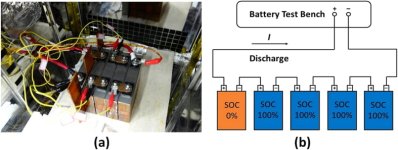agniusm said:
More or less. So if manufacturer specifies brackets of 2.8V and 4.2V and within that range states a capacity of 2000mah at 1C, -12% would render voltage of 2.46V which, regarding article would render little to no risk of copper electrods being dissolved in electrolite thus no damage to cell?
agniusm said:
According to this article, up to -12% does nothing. I am speaking on single occurances not constant use.
I had brand new cells driven to 1V. I have charged them up and then discharged. They gave out 2340mah vs 2050mah declared by manufacturer. This got me into reading how it effects cells in real life. I know they are scrap, still good for prototyping

I had a similar case (forgot to turn off Controller over winter, no BMS, battery was at 1,5V) so i read the article.
It is not totally clear what they mean with "-12%", but from what i understand when looking at the graphs i think they can be interpreted like this:
100% SOC means 4,2V or fully charged, and 0% SOC means 0V.
If you have a cell with lets say only 0,5V left, it still will output a little bit of energy until it is at 0V.
It seems they are talking about one bad cell beeing part of large pack with more cells in series, which would mean that current will continue to flow through the cell and turning it's polarity (+ becomes -).
These -12% now could come from "current x time" or/and max voltage difference the cell ever had while beeing operating in such reverse polarity condition.
Above -12% (well less than), the copper starts to build bridges between cathode and anode making internal shorts.
Hm, i know about cells which can be charged back up from 0,00V (older Sony VT or VTC cells for instance), but i also know about cells which just get warm and take no charge (not so old cells with more mAh), but yet these never should have had negative voltage across them which makes me think that those internal shorts could also be caused by other factors.




